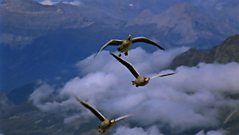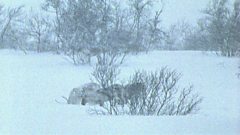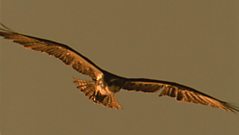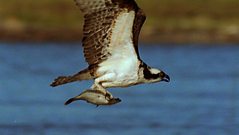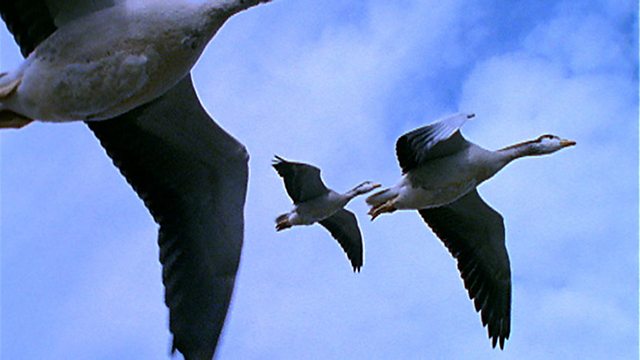
High-altitude migration
Bar-headed geese fly where no other animal dares go.
Bar-headed geese are unique: their migration takes them higher than any other bird on the planet. Where they fly no other animal dares go. To try to understand more about these exceptional animals, a team of American and Indian scientists have set up an ambitious project to follow the birds on their annual migration. The plan is to catch the birds at the most southerly end of their migration in Nepal. The team use the skills of the local Shikari hunters to set a trap for the bar-heads.This traditional system holds them by the legs but won't hurt them in any way. Two strong healthy geese are carefully selected and fitted with hi-tech satellite transmitters. These are extremely lightweight tracking devices and won't impede the birds' movement, but they will allow us and the scientists to follow their every move. Our birds are named after the mountaineers who first climbed Mount Everest, so the first goose is called Tenzing. Another tracker is attached to the second goose, called Hillary. The power units on the trackers should last for the next ten months, time enough to record their entire round trip all the way to Tibet and back. Immediately the satellite trackers start to transmit the birds' positions - telling us exactly where they are. A few weeks later in mid-March, their journey begins - Hillary and Tenzing turned north and flew towards Tibet. Would the trackers survive the extreme altitude and cold? For that matter, would Hillary and Tenzing? The data we got was awesome! We were treated to an hour-by-hour signal as they flew right over the top of the Himalayas. Hillary and Tenzing flew up to 6,000 metres, that's nearly 20,000 feet and hit speeds of over 50mph. Both of our birds then landed on the extreme high altitude lakes and settled down for the summer.
Duration:
This clip is from
Featured in...
![]()
Βι¶ΉΤΌΕΔ Nature
Be captivated, informed and inspired by the world's wildlife.
More clips from Episode 5
-
![]()
Himalayan crossing
Duration: 01:40
-
![]()
Migration delay
Duration: 02:35
-
![]()
Goose nesting site
Duration: 02:12
More clips from Incredible Animal Journeys
-
![]()
Caribou resilience
Duration: 00:34
-
![]()
Migration mentality—Osprey Odyssey
Duration: 01:16
-
![]()
Fatal fishing error—Osprey Odyssey
Duration: 01:57
-
![]()
Osprey prowess—Osprey Odyssey
Duration: 00:58



